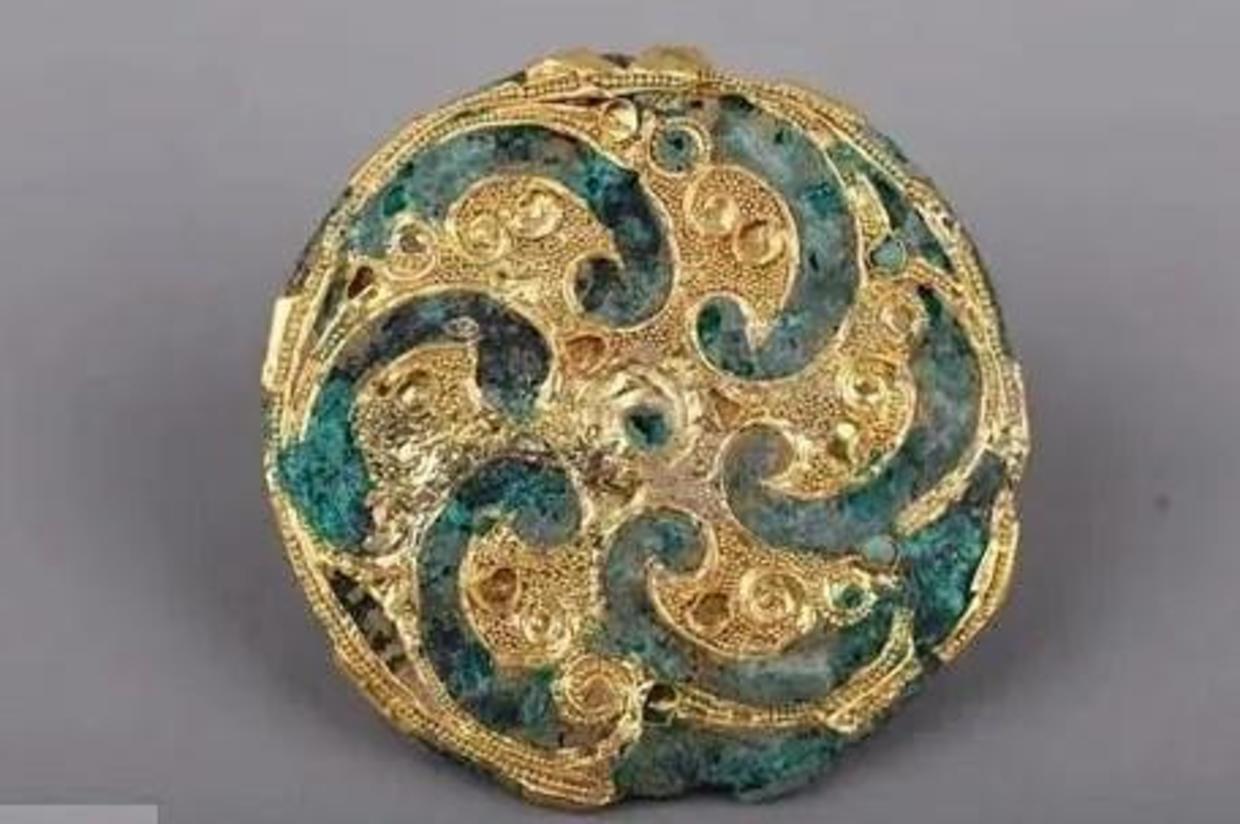
On January 23rd, the Chinese Academy of Social Sciences (CASS) attained information about the discovery of three tombs from the Luoyang Archaeological Research Institute. They were doing archaeological work while building pumping stations in the Xiaolangdi South Bank Irrigation Area in Shunzhuang Village of Mengjin District.
The archaeologists found a family cemetery with three tombs from the Wei and Jin Dynasties. This is the first time a high-level family burial site from that time has been discovered in Luoyang, as reported by CASS.
The burial ground is in the southeast of Shunzhuang Village, Mengjin District. The three tombs are lined up from east to west, all facing north to south. The tomb’s main part is in the north, while the passage is in the south. The design seems organized with a slope tomb and brick chamber tomb.
The press release from CASS stated that the tomb passage even has steps. However, the tombs have been looted multiple times. Liu Bin, an associate researcher managing the on-site archaeology for the Luoyang Institute of Archaeology, explained that, although Luoyang has seen a fair amount of Wei and Jin Dynasty tombs, finding high-status family tombs from that era is unparalleled.
Archaeologists exploring a small village in China announced recently that they discovered three tombs filled with ancient treasures, including gold ornaments, a jade sword and ivory lacquerware.
The tombs are actually a "high-level family cemetery" from the Wei and Jin… pic.twitter.com/z8Hokjb3vk
— Ancient Hypotheses (@AncientEpoch) January 30, 2024
Three tombs naming M1, M2, and M3
These three tombs are named M1, M2, and M3. Liu Bin explained that M1 has a tomb passage, a brick-sealed door, corridor, stone door, square main chamber, and east chamber.
Along each side of the tomb passage, there are twelve post pits. Moreover, the passage has seven steps and is 39.8 meters long with a total depth of eleven meters. In the middle of the main chamber’s backside, there is a lacquered coffin cover, as mentioned in the official press release.
Research indicates that, in the Wei and Jin Dynasties, long sloping tomb passages and steps that gradually slope inward are characteristics of higher-ranking tombs.
Liu Bin explained that the seven steps and twelve pillar pits in M1 suggest it was the second-largest tomb in the Western Jin Dynasty just after the imperial mausoleum.
Previously, Luoyang had two seven-step tombs found in the Western Jin Mausoleum area of Shouyang Mountain in Yanshi. Both were rectangular earthen cave tombs with no post pits on the sides of the tomb passage, and the tomb chambers were relatively small.
Gold ornaments found inside these tombs
Despite being robbed multiple times, the three tombs yielded valuable treasures, such as gold ornaments, pottery, coins, and more, as mentioned in the news release.
A total of over two hundred artifacts were discovered, including previously unseen ivory lacquerware. These items, considered high-quality crafts or practical objects, serve as “symbols of status,” reflecting the wealth and influence of the family interred in the tomb.
Among the findings were bone earrings adorned with phoenix and bird patterns, a relatively rare discovery. Additionally, archaeologists unearthed jade objects such as a sword and belt hook, presumed to be cherished family heirlooms.
See all the latest news from Greece and the world at Greekreporter.com. Contact our newsroom to report an update or send your story, photos and videos. Follow GR on Google News and subscribe here to our daily email!



